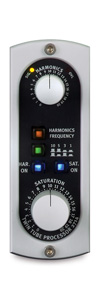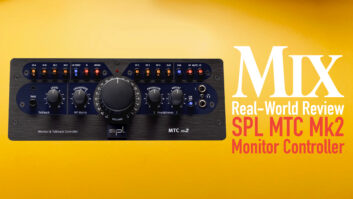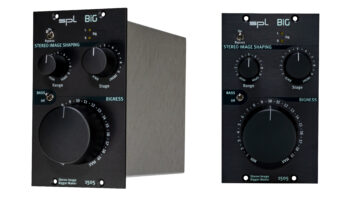
The TwinTube plug-in offers a convincing emulation of tube circuitry.
Many plug-in manufacturers claim that their product will reproduce the sound of high-quality tube circuitry, but few succeed. The SPL TwinTube delivers the goods so convincingly, you’ll swear you’re hearing the real thing.
Harmonic Convergence
Available in native and TDM versions, TwinTube is sold both as a single plug-in and as part of the company’s Analog Code plug-in bundle. For this review, I tested Version 1.03 in Digital Performer 6.02 on an 8-core 2.8GHz Mac Pro running Mac OS 10.5.4.
TwinTube’s simple and intuitive user interface provides independent control over two attributes of tube circuitry: harmonics generation and saturation. The combined settings of two Harmonics switches select which of four frequency bands (centered around roughly 2, 3, 6 and 10 kHz, respectively) you wish to process with a separate rotary Harmonics control. The Harmonics control boosts the level of harmonics generated from the chosen frequency band up to 15 dB. A separate Saturation control increases the degree of tube-like saturation.
TwinTube offers separate bypass switches for the Harmonics and Saturation processing blocks, and a global bypass. Signal-present and internal-overload indicators keep you apprised of levels. You can switch among four saved control setups by clicking on A, B, C and D buttons. All parameter values are automatically saved when you leave one setup to recall another. Assuming your DAW supports automating plug-ins, every one of TwinTube’s controls can be automated, including switching stored setups. This worked great in Digital Performer 6.02.
Warming Trend
In listening tests, almost everything TwinTube touched turned to gold. Various Harmonics settings brought out different registers of instruments and vocals, emphasizing certain attributes that were previously understated. The Saturation control produced quality tones that progressed from subtly compressed and lustrous at low settings to boldly distorted when cranked. Even at extreme settings, this wasn’t bumble-bee-trapped-in-a-tin-can stuff. We’re talking the sound of high-quality circuitry.
For pristine sources, bypassing Saturation and using only Harmonics was often the ticket. Choosing different Harmonics Frequency bands in turn, I could easily bring forward the midrange register of, or accentuate hammer strikes on, a grand piano track in a very sweet way. The 10kHz setting brought out the pick strike on an acoustic guitar and lent a gorgeous, shimmering quality to the track. Lower-frequency settings made the guitar sound more present and midrange-y — again, sweetly so.
Boosting harmonics for the 2kHz band made DI’d electric bass sound wonderfully burpy. Boosting the Saturation control increased the track’s subjective girth and made it sound much richer. Engaging both controls at once with Saturation set to nearly full-bore pushed the track slightly over the top, producing cool distortion.
Harmonics processing also effectively enhanced the beater slap on kick drum and made snare drums pop. Moderate amounts of saturation added girth and loudness to both drums. Too much saturation, however, created flams. But it was nice that SPL gave me enough rope to hang myself rather than setting arbitrary limits to my madness.
Saturated vocals also sounded bigger and warmer. Boosting harmonics for the 6kHz band made female vocals sound richer and more present, but also increased sibilance — nothing a downstream Waves De-Esser plug-in couldn’t easily tame, though. TwinTube’s 3kHz Harmonics setting warmed up and filled out a cold, thin male vocal track better than any other plug-in in my vast arsenal.
All Aglow
I was pleased that all settings were retained when moving TwinTube from a mono to a stereo track, and vice versa. I only wish there was an output level control — designed to be inactive when the plug is bypassed — to make wet/dry comparisons easier.
Bottom line: TwinTube is the best “track warmer” I’ve heard to date. For the sound of high-quality tube gear being either tenderly used or intentionally abused, this is the real deal.
Mix contributing editor Michael Cooper is the owner of Michael Cooper Recording in Sisters, Ore. Visit him at
www.myspace.com/michaelcooperrecording.








